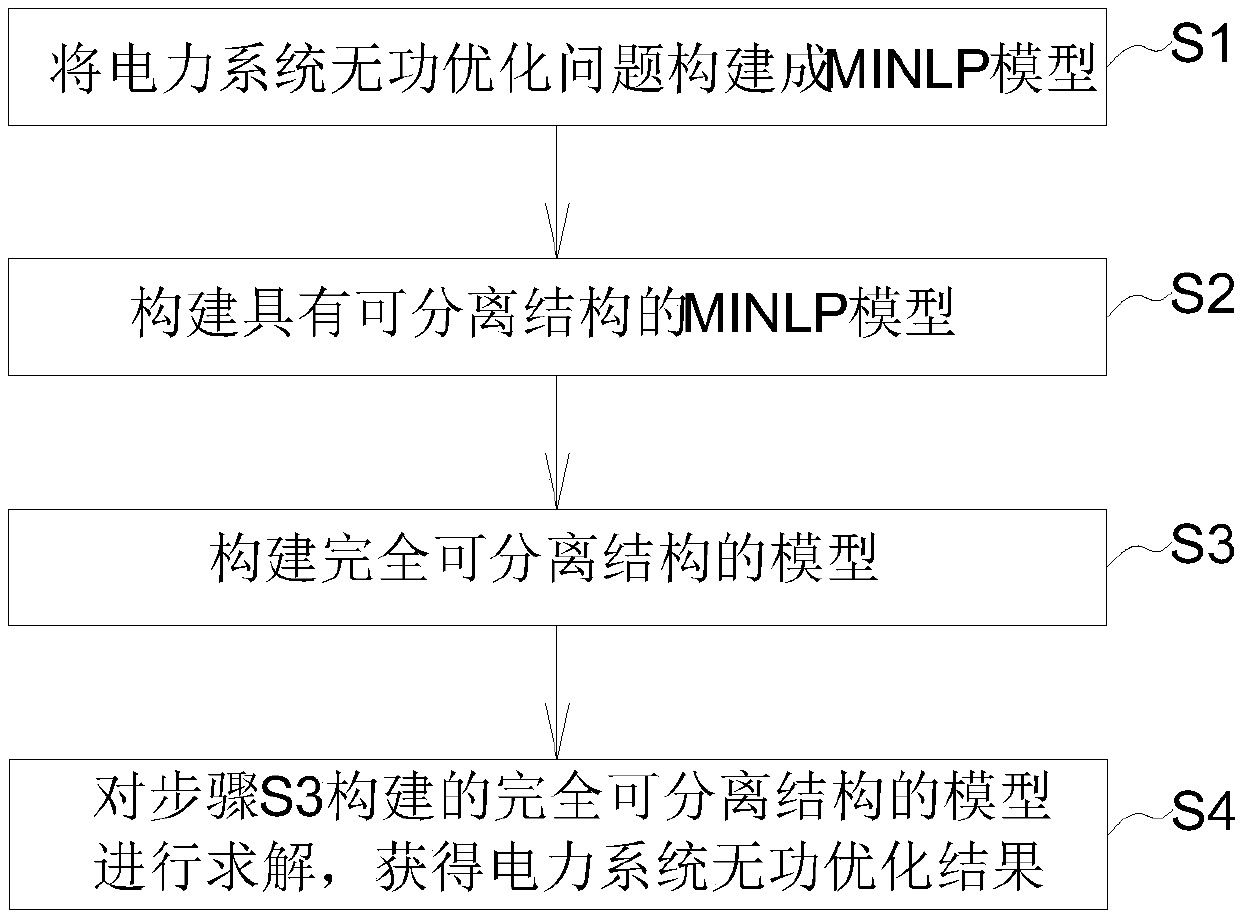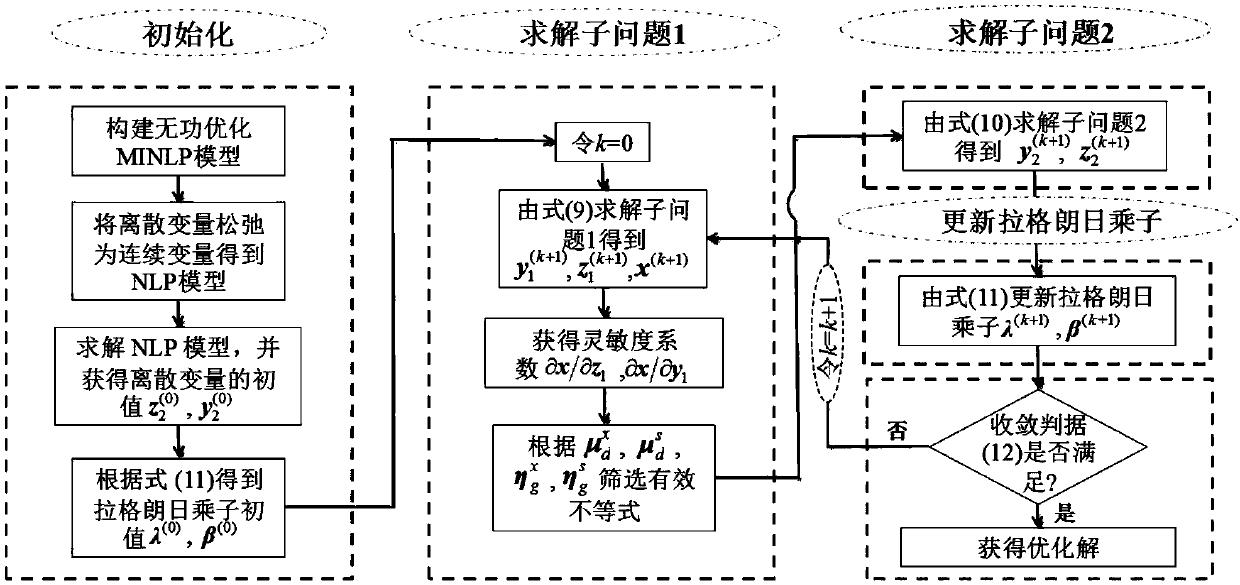Decomposition method of solving discrete control-containing electric power system reactive optimization
A discrete control and power system technology, applied in reactive power compensation, AC network voltage adjustment, etc., can solve problems such as difficult to ensure algorithm convergence, time-consuming, and unfeasible optimization results
- Summary
- Abstract
- Description
- Claims
- Application Information
AI Technical Summary
Problems solved by technology
Method used
Image
Examples
Embodiment
[0092] refer to figure 1 As shown, the flow chart of the decomposition method for solving the reactive power optimization of the discrete control power system provided by this embodiment, the method specifically includes the following steps:
[0093] S1. Constructing the power system reactive power optimization problem into a MINLP model; wherein, the MINLP model is described as follows:
[0094]
[0095] s.t.g(u c , u d ,x)=0 (1b)
[0096] u cmin ≤u c ≤u cmax (1c)
[0097] u dmin ≤u d ≤u dmax (1d)
[0098] x min ≤x≤x max (1e)
[0099] Among them: f(u c , u d , x) represents the active power loss of the whole network; formula (1b) represents the nonlinear power flow equation; formulas (1c)-(1e) represent the upper and lower bound constraints of continuous control variables, discrete control variables and state variables respectively; u c =V g Represents a column vector of continuous control variables; u d =[Q B ; k T ] represents the column vector of ...
PUM
 Login to View More
Login to View More Abstract
Description
Claims
Application Information
 Login to View More
Login to View More - R&D
- Intellectual Property
- Life Sciences
- Materials
- Tech Scout
- Unparalleled Data Quality
- Higher Quality Content
- 60% Fewer Hallucinations
Browse by: Latest US Patents, China's latest patents, Technical Efficacy Thesaurus, Application Domain, Technology Topic, Popular Technical Reports.
© 2025 PatSnap. All rights reserved.Legal|Privacy policy|Modern Slavery Act Transparency Statement|Sitemap|About US| Contact US: help@patsnap.com



